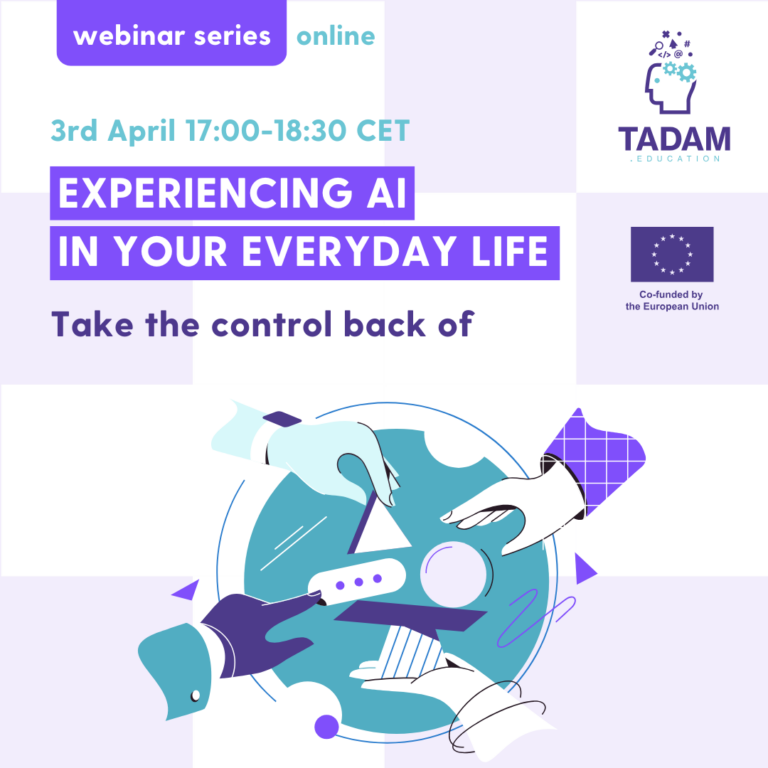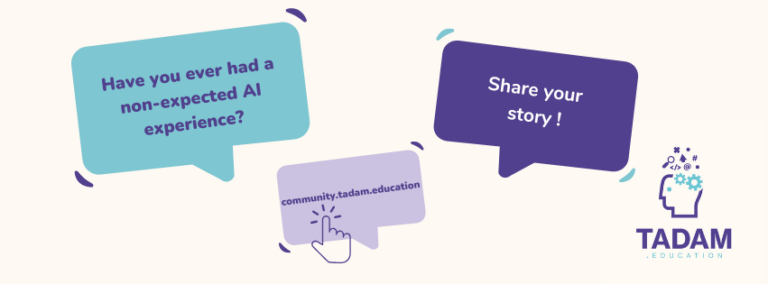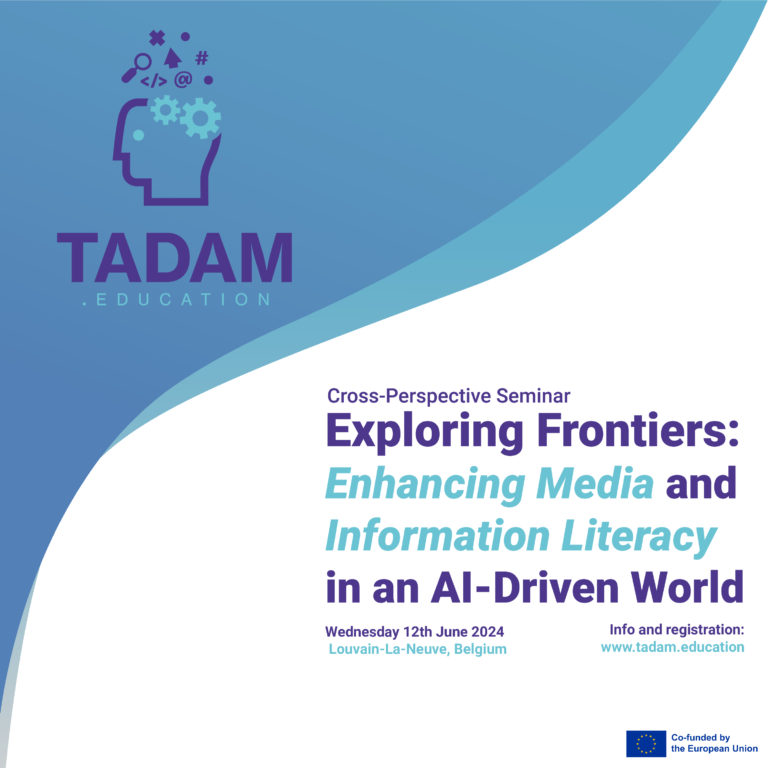A workshop in Brussels to raise awareness of the importance of media literacy in the face of the challenges posed by AI
On Friday 22 November 2024, as part of the European Agora for Journalism in Brussels, in collaboration with the IHECS, Media Animation offered a first TADAM workshop: ‘’Media and information literacy in the face of AI: Info guaranteed without AI or verified AI: metacommunication by journalists on their use of AI, a media literacy issue?”’
Around 60 people took part: journalists, media educators and media education students. The aim of the workshop was to look at how newsrooms in general and journalists in particular communicate their use of generative artificial intelligence in their media productions. Media professionals anticipate their audiences’ representations of the information they produce and thus help to ensure, maintain or re-establish a relationship of trust between themselves and their audiences.
Based on case studies and discussions between professional journalists, media educators and students, the workshop aimed to highlight these emerging practices that question the territories allocated to these different players, between the prerogatives of journalists and media educators, conflicts of interest between Media Literacy and journalistic practices and anticipating the needs of audiences.

Using Bono’s Six Hats methodology, participants were invited to react to the examples by adopting different postures: sceptical, optimistic, pessimistic, creative and emotional.
Here are the main ideas exchanged at the discussion:
On the positive and negative issues of AI in media production
Postitive issues:
- AI saves time for journalists
- AI can be used to popularise and simplify information, making it accessible to a wide range of audiences.
- For journalists, it’s interesting to be confronted with new technologies, to discover them, to appropriate them, to be able to propose new things to their audience. They need to come face to face with what human beings, citizens themselves, are confronted with.
Negative issues:
- As a reader, if a media outlet admits to using AI, it gives the impression of working in a hurry and calls into question the reliability of the information.
- AI is a productivity tool, designed to automate the journalist’s tasks
- Fear of very tangible effects on jobs in the journalism profession
- The role of a journalist is not to verify information generated by AI. ‘I don’t use AI personally. I don’t want to saw off the branch I’m sitting on.’
About the biases generated by AI and their ethical/deontological implications
- Given that AI is fed by human content, if we are critically armed in the face of what it generates, it can help us to have a good grid for analysing and criticising society.
- AI can act as a magnifying mirror for these existing biases and thus reveal them.
- As a reader, you can’t be sure of the reliability of what the AI answers (and therefore what I might read in the media). What AIs provide as information is a vision of the world captured at a given moment. AI offers content that is akin to ‘fast food information’.
- AI will generate something probable but not real. There is a real problem with the peremptory tone used by GPTs. Text-generating AIs generate text, but they don’t generate the real thing. Problem of tone, peremptory, assertive
- The problem is the lack of transparency. This brings us to some basic questions from journalists. From the public’s point of view, could we ask for a typographical identification that clearly indicates when an AI has been used to assist in the production of information, as well as a probability score for the reliability of the information presented?
About public perception, awareness and emotions towards AI results
- The more we learn to understand and explain to people how AIs really work, the more we will be able to deconstruct the speeches and myths that AI creators are trying to ‘sell’ us.
- AI is based on sources. The question is therefore how AI relies on sources and which sources it relies on.
- The use of AI could have a perverse effect in terms of a loss of confidence in the information that could be delivered by a journalist. What specificity does the journalist still have compared with the average Internet user who has the same tools at his or her disposal? Where is the added value of this journalistic information based on AI?
- One positive effect is that we are questioning how information is produced and we are therefore going to use our critical minds more to educate ourselves about information. But that requires media literacy. And is it the role of journalists to educate people about what they themselves are saying?
- And what is currently lacking in relation to AI is an emotional perspective. The production of information by AI is part of something very rational. As readers, we read with emotions, and is AI capable of providing us with emotions?
- Beyond generative AI, AI in the broader sense also means recommendation algorithms that will identify what we like, recommend content and condition our access to this or that type of information by ultra-personalising our experience.
- We start from the premise that young people are going to use IIA anyway, so we need to take an educational and supportive approach to these practices. That’s the role we give to media education. If they just use AI, that’s fine. But if they entrust all their productions to the AI without proofreading themselves, that’s another matter. Hence the importance of this educational work.













